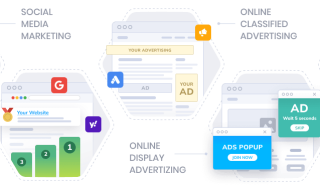
The digital advertising landscape is a dynamic and powerful arena, offering businesses unprecedented opportunities to reach target audiences. However, with this power comes significant responsibility. In recent years, a growing chorus of voices has called for greater accountability from the platforms that dominate this space, particularly concerning the proliferation of hate speech, misinformation, and harmful content. One of the most impactful of these calls to action was the Stop Hate for Profit campaign.
Launched in mid-2020 by a coalition of civil rights organizations, including the NAACP, Anti-Defamation League (ADL), and Color of Change, the Stop Hate for Profit movement initially urged major advertisers to pause their ad spend on Facebook (now Meta) and its associated platforms. The goal was to pressure these tech giants into taking more stringent and effective measures to curb the spread of hate and disinformation. While the primary wave of the campaign occurred a few years ago, its ripples continue to shape the conversation around ethical advertising, brand safety, and corporate social responsibility in 2025.
This article delves into the Stop Hate for Profit campaign, its enduring significance, and what it means for digital advertisers today. Understanding its principles is crucial for businesses looking to navigate the complexities of online advertising responsibly and effectively, aligning their practices with the E-E-A-T (Experience, Expertise, Authoritativeness, and Trustworthiness) framework that builds lasting brand value.
The Genesis and Core Arguments of Stop Hate for Profit
The Stop Hate for Profit campaign emerged from escalating concerns over the role social media platforms played in amplifying divisive narratives, hate speech, and harmful misinformation. The core grievances highlighted by the campaign included:
- Inadequate Content Moderation: Platforms were accused of failing to effectively identify and remove content that violated their own terms of service regarding hate speech, harassment, and incitement to violence.
- Algorithmic Amplification: Concerns were raised that platform algorithms, designed for engagement, inadvertently prioritized and amplified sensational, divisive, and often harmful content.
- Lack of Transparency: Demands were made for greater transparency regarding content moderation policies, enforcement actions, and the prevalence of harmful content.
- Profiting from Harm: A central tenet of the campaign was that platforms were financially benefiting (through advertising revenue) from content that caused real-world harm and social division.
- Insufficient Action Against Problematic Groups & Individuals: The campaign called for more decisive action against accounts and groups consistently spreading hate or disinformation.
The primary call to action was for advertisers to "hit pause on hate" by temporarily halting their advertising expenditure on the targeted platforms. This was a direct appeal to leverage advertisers' collective financial influence to compel policy changes. Many prominent brands participated, leading to significant public discussion and some initial responses from the platforms.
Why "Stop Hate for Profit" Still Resonates with Digital Advertisers in 2025
Though the peak of the 2020 ad pause has passed, the Stop Hate for Profit campaign left an indelible mark on the digital advertising ecosystem. Its principles and the issues it raised remain highly relevant for advertisers for several compelling reasons:
- Brand Safety and Reputation Management: The risk of an advertisement appearing alongside hateful, derogatory, or false content is a significant concern. Such ad-jacencies can severely damage a brand's image, erode consumer trust, and lead to public backlash. In 2025, consumers are more discerning than ever and expect brands to ensure their advertising doesn't inadvertently support platforms or content misaligned with ethical values.
- Evolving Consumer Sentiment and Trust: Modern consumers, particularly younger generations, increasingly make purchasing decisions based on a brand's values and social responsibility. Brands perceived as advertising on platforms that tolerate or amplify hate speech risk alienating a significant portion of their customer base and losing trust. Authenticity and ethical alignment are paramount.
- Ethical Advertising and Corporate Social Responsibility (CSR): There's a growing global movement towards greater corporate accountability. Ethical advertising is no longer a niche concern but a core component of CSR. Businesses are expected to ensure their operational practices, including their advertising spend, contribute positively (or at least not negatively) to society. Supporting platforms perceived as lax on hate speech can conflict directly with a company's stated values.
- Impact on Long-Term Platform Viability: An online environment saturated with toxicity, hate speech, and misinformation can degrade the overall user experience. This can lead to user attrition, reduced engagement, and ultimately, diminish a platform's long-term value and stability as a reliable advertising channel. Advertisers have a vested interest in the health and integrity of the platforms they utilize.
- The Shifting Regulatory Landscape: Governments worldwide continue to scrutinize platform governance, content moderation practices, and the impact of social media on society. The potential for new regulations impacting digital advertising, data privacy, and platform liability remains high. The principles championed by Stop Hate for Profit often align with the concerns driving these regulatory discussions.
- Heightened Advertiser Consciousness: Perhaps the most enduring legacy of the campaign is the significantly increased awareness among advertisers regarding their influence and responsibility. The conversation has shifted, and many brands now incorporate more rigorous brand safety protocols and ethical considerations into their media buying strategies as standard practice.
Actionable Strategies for Digital Advertisers in an Evolving Landscape
Navigating the ethical complexities highlighted by movements like Stop Hate for Profit requires a proactive and principled approach from digital advertisers. Here are key strategies:
- Diversify Your Advertising Portfolio: Avoid over-reliance on any single platform. Explore a mix of advertising channels, prioritizing those that demonstrate a strong commitment to content moderation, transparency, and brand safety. Continuously evaluate each platform's policies, enforcement record, and alignment with your brand values.
- Leverage Advanced Brand Safety Tools and Controls: Utilize all available brand safety tools offered by advertising platforms, such as keyword blocklists, placement exclusions, topic exclusions, and content sensitivity settings. For more granular control, consider the role of technologies designed for third-party brand safety verification and contextual targeting (though always ensure these align with privacy considerations).
- Advocate for Greater Platform Transparency and Accountability: Advertisers, individually or through industry bodies, possess collective influence. Use this influence to push for clearer platform policies on hate speech and misinformation, more robust and consistent enforcement, transparent reporting on content moderation actions, and better controls for advertisers.
- Develop and Enforce a Comprehensive Brand Safety Policy: Establish clear internal guidelines defining what constitutes unacceptable content adjacency for your brand. This policy should detail acceptable and unacceptable content categories, keywords, and environments. Ensure this policy is communicated to all internal teams and external agency partners involved in media buying.
- Prioritize Contextual and Values-Aligned Placements: While audience targeting is powerful, consider supplementing it with contextual advertising strategies. Placing ads in environments that are thematically relevant to your product/service and align with your brand's positive values can enhance brand perception and reduce the risk of negative adjacencies.
- Monitor Campaigns Vigilantly and Continuously: Don't "set and forget" your campaigns. Regularly review ad placement reports to see where your ads are appearing. Be prepared to act swiftly to pause campaigns or adjust targeting if your ads are found alongside inappropriate or harmful content.
- Invest in First-Party Data and Owned Channels: As trust in some third-party platforms fluctuates, the strategic importance of building and nurturing your own first-party data and direct communication channels (e.g., email marketing lists, engaging website content, customer loyalty programs) increases. This reduces reliance on external platforms and gives you greater control over your audience engagement and brand environment.
- Assess the "Cost of Inaction": Sometimes, continuing to advertise on platforms with known issues, even if it seems to deliver short-term ROI, can incur a higher long-term cost in terms of brand damage, lost consumer trust, and contribution to a negative information ecosystem. Factor ethical considerations into your ROI calculations.
Conclusion: The Advertiser's Role in a Responsible Digital Future
The Stop Hate for Profit campaign served as a significant wake-up call, highlighting the profound influence advertisers wield and the responsibilities that come with it. Its enduring legacy is a heightened awareness that decisions about ad spend have implications far beyond immediate campaign metrics; they impact brand perception, consumer trust, and the broader information environment.
In 2025, digital advertisers must be more vigilant and principled than ever. By proactively implementing robust brand safety protocols, demanding greater accountability from platforms, diversifying media investments, and aligning advertising practices with core company values, businesses can protect their reputation, engage consumers authentically, and contribute positively to the digital landscape. Navigating this requires strategic foresight and a commitment to ethical practices, potentially guided by experienced partners like Webxloo who understand the intricacies of responsible and effective digital advertising. Ultimately, fostering a safer, more respectful online world is a shared responsibility, and advertisers have a pivotal role to play.



 Phone Consultation
Phone Consultation
 Request a quote
Request a quote
 Text a Message
Text a Message